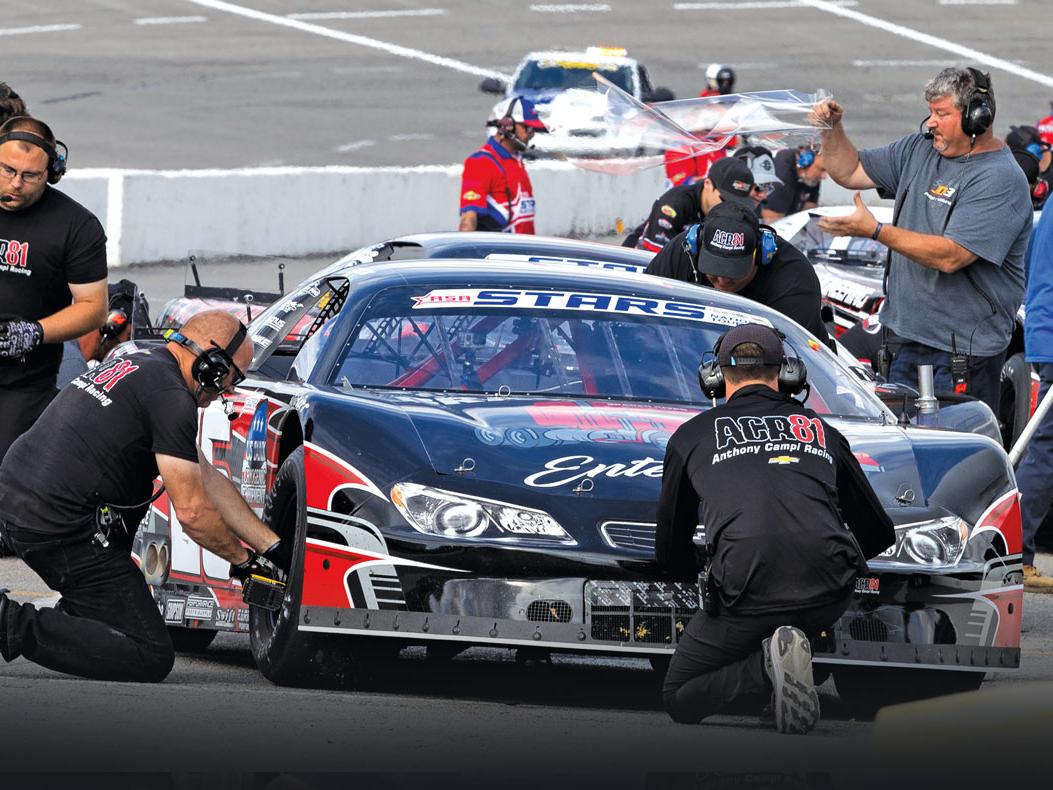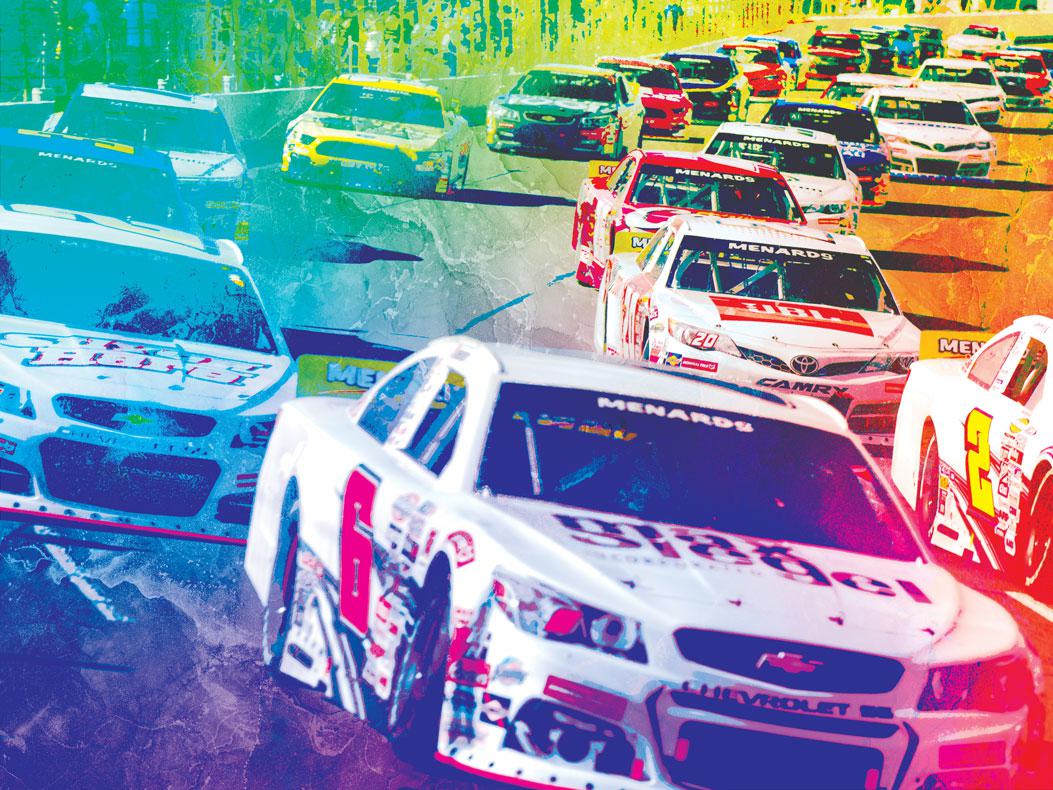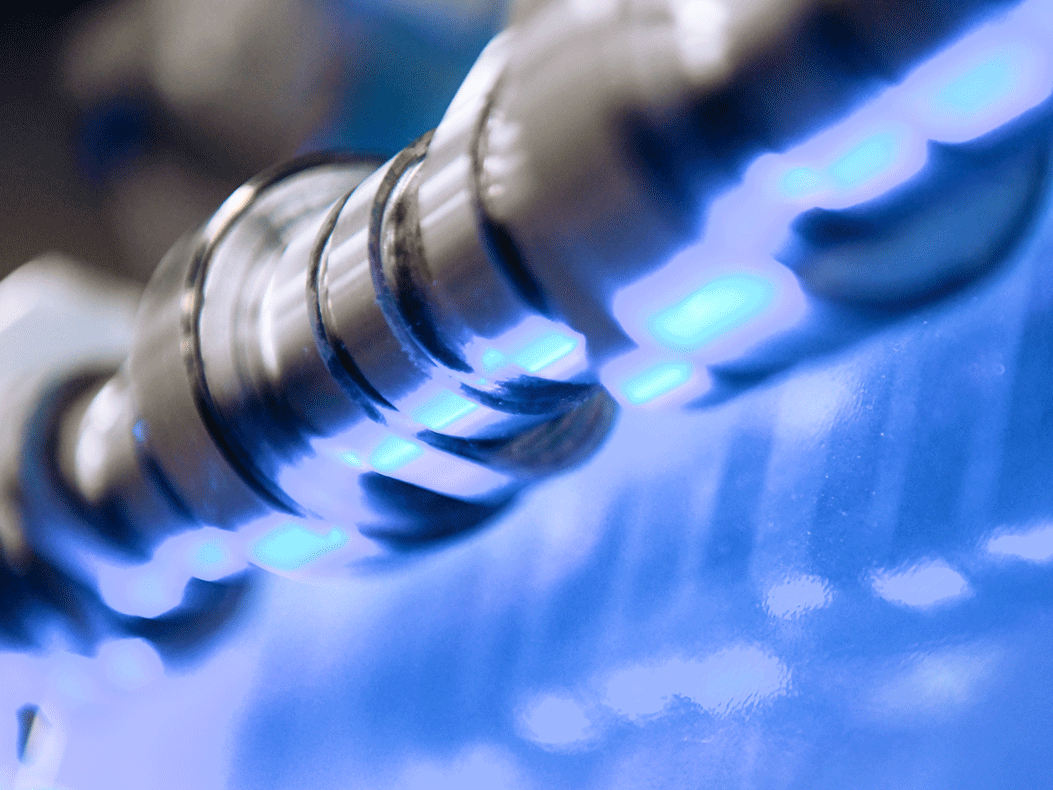Security Layer
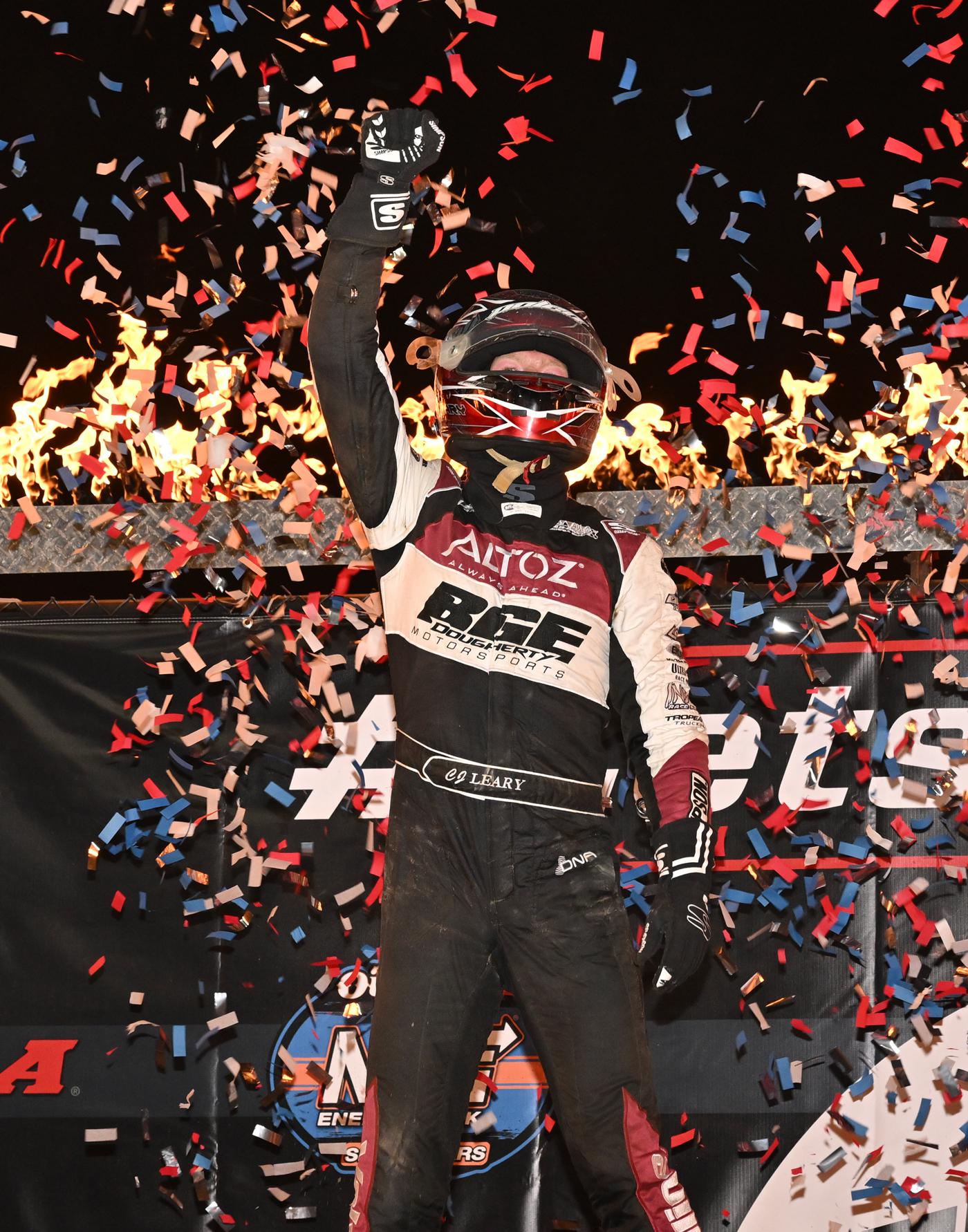
Better breathing and lighter weight enhance thermal protection in the latest selection of drivers’ suits.
Some 60 years ago, when most race cars were still powered by gasoline, fire protection for race drivers consisted largely of dipping cotton coveralls into a drum of supposedly fire-retardant chemicals. The resulting concoction was often proven to be inadequate. The resulting push to protect competitors from fire has exponentially boosted the sport’s safety as fire-resistant fabrics, led by DuPont’s Nomex brand, became standard-issue equipment for drivers.
The carnage from fire in racing has been unquestionably diminished. Over the decades, fire suits, as the racers call them, have evolved in terms of fire protection to include multiple layers of protective fabric. In the case of drag racing, where engine explosions are more commonplace, those layers have resulted in bulky, thick suits. The desired outcome of driver suit development has been a gradual arc toward making the suits easier to wear. It can be tough, and dangerous, for a driver to exit a burning race car if the suit binds up his or her movement like a straitjacket.
During our interviews with several prominent US manufacturers of drivers’ suits, the providers agreed that compliance with SFI Foundation guidelines for driver protection from fire, which in themselves have become more stringent and comprehensive with the passage of decades, is nearly universal. They are also
in agreement that because of SFI and constant testing, most suit manufacturers have arrived at a plateau where excellent fire protection is the norm across the board, given constants such as the number of layers of a given suit. They agree that any additional protection against thermal injury is likely to come incrementally as fabrics undergo continued development.
What is more realistic is that drivers’ suits of tomorrow will become increasingly user-friendly to their wearers. Product manufacturers are continually engaged in testing and research to find new materials that will allow the suits to breathe better, enhance the wicking of driver perspiration to minimize the threat of steam burns in a fire, and improve their suits with panels that are both fire-resistant and flexible enough to afford racers more freedom of physical movement, especially when they’re trying to escape from a flaming race car.
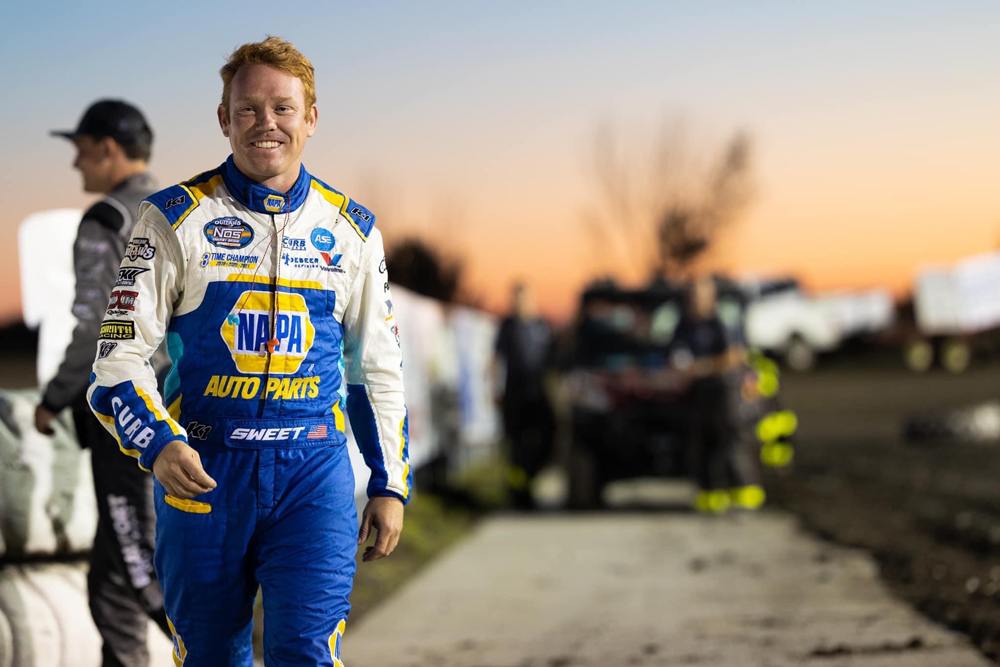
Cooperative Effort
“The first thing to clarify is that all the manufacturers today have a cooperative effort between the manufacturers and the suppliers,” said Ben O’Connor of Impact Racing, Indianapolis, Indiana. “You have suppliers that are trying to sell us goods and services, and then they work toward trying to develop better products, such as fabrics. They’re the ones who are really doing the technical development work. We may use an outer layer with a combination of a different layer that may come from a different supplier, to come up with the best protection and thermal properties.”
O’Connor noted that SFI standards for burn protection “haven’t really changed in decades.” Most suit manufacturers today have no difficulty when it comes to meeting the SFI requirements. “The real key, and where the magic is, is better fabrics and better breathability. If you look at what was being produced 10 years ago, and what’s being produced today, it’s profound in terms of how light the fabrics are and their breathability. And there are secondary considerations, like stretch panels for comfort, the design and patterning of the suit, where you put the belt, and even closure types. Whether the suit is two layer for SFI 5, or multiple layers for SFI 15 or 20, we’re creating it while also making it lighter and breathable.”
Fire-resistant drivers’ suits today largely employ two different fabrics. One is Proban, the name given to cotton-based threading used in some SFI-approved fabrics. The other major group is Aramid, a nylon-related polymer that is more rigid and can also be milled into fabrics, with Nomex arguably the best-known brand. As O’Connor explained, the milling process involves variables such as the distance between individual threads, how large the threads are, and how much the patterning affects the weight of the suit. This process is one reason drag racers, who once wore bulky, astronaut-style aluminized fire suits, now enjoy the added mobility and protection of multi-layer fabrics.
Impact Racing offers custom-designed drivers’ suits for top professionals such as NASCAR racers, and the technologies of those suits have trickled down into more widely marketed suits. “Going forward, we’re still looking for better breathability and light weight,” O’Connor said. “Today’s changes could be very small and incremental, a lot smaller compared to what we’ve done over the past 10 years.”
Digital Influence
Carlsbad, California-based K1 RaceGear offers a line of protective gear including its Challenger, Precision, and Aero SFI lines of racing suits, and is doing its modern adaptations in view of today’s importance of motorsports as a marketing tool. In the past, heat-transfer suit graphics and dye-based materials began to pose challenges such as reduced airflow inside the suit and added weight. That led K1 RaceGear to create a new process of Nomex digital printing, which offers a lighter suit that meets the demands of today’s sponsors for logo presentation.
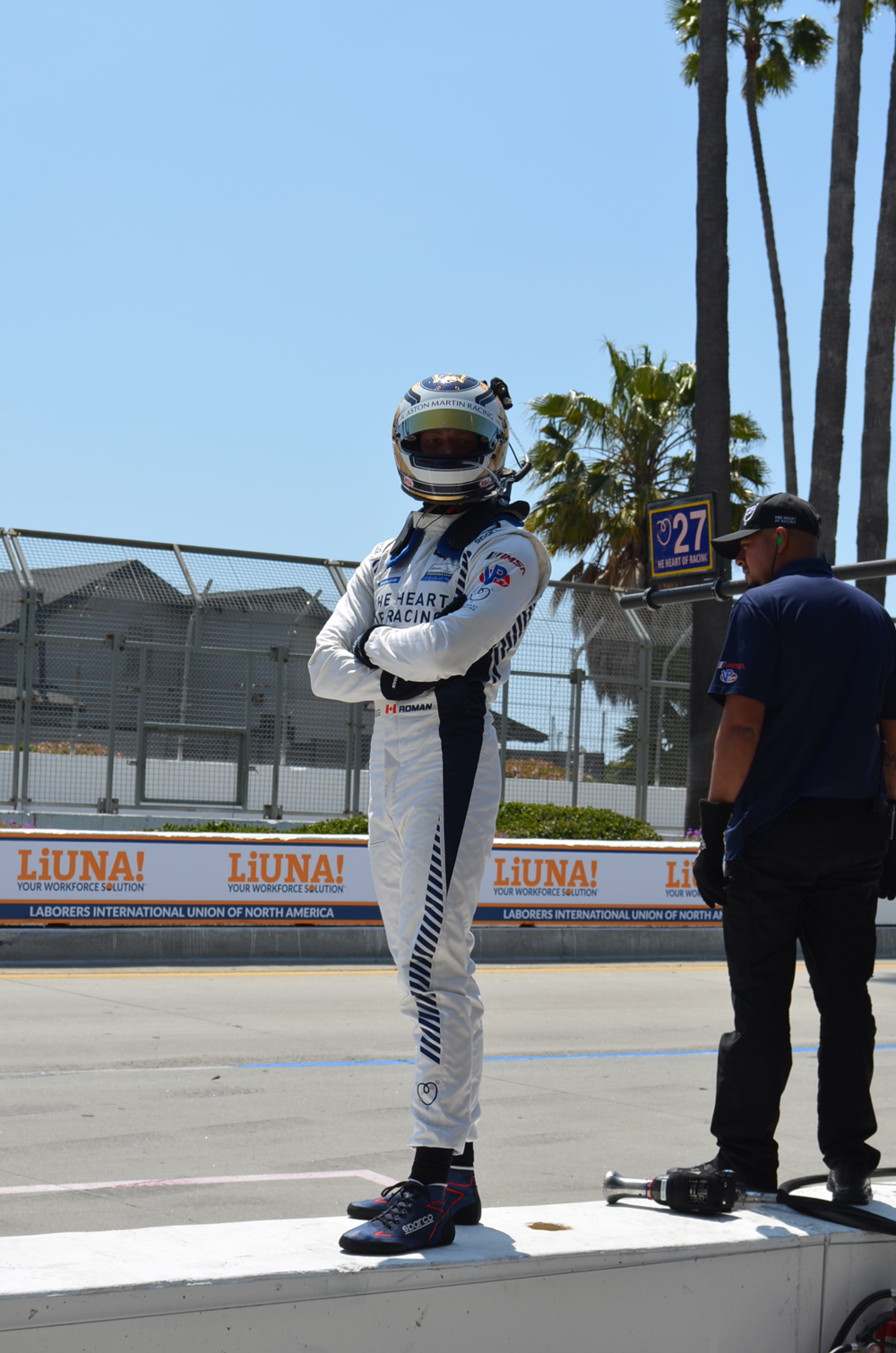
K1 RaceGear has shifted from traditional hand-patterning to Optitex digital patterning. This technology, tailored for apparel design and akin to SolidWorks, allows for precise customization based on individual body measurements, according to a company source. Digital patterning ensures a consistent fit for drivers across various suits. Once an optimal fit is achieved, the pattern can be easily replicated on future suits, providing drivers with a dependable and standardized fit. The Optitex software also facilitates the overlay of artwork onto the pattern, ensuring accurate positioning and sizing of logos and designs.
All of this allows for the suit to provide adequate thermal protection while also meeting rigid standards on the sizing and positioning of sponsor logos as required by groups including NASCAR and IndyCar. These advantages also translate to sportsman-type suit buyers looking for better sponsorship exposure. NASCAR has also added tests for the flame resistance of embroidery and other suit add-ons. Aesthetics will be a big component of future suit development, sources at K1 RaceGear believe, along with addressing safety concerns such as heat exhaustion, which better fabric breathing will address.
Personal Experience
Fabric evaluation and selection is also a key element of suit creation from Redtide Race Gear in Salt Lake City, Utah, as identified by Josh Minson. “The biggest thing at Redtide is that we want a lightweight Nomex suit that won’t weigh them down, and we’re working to get them as light as physically possible within the SFI guidelines,” he said. “I wear one myself, so if I don’t like it, I’m not going to sell it to a customer. We try to build a brand so everything’s custom. Everyone has a different body shape.”
Minson noted that a current Redtide SFI 20 two-piece suit weighs 13 pounds, meaning additional lightness is a goal. The overall weight of the suit can be exacerbated by the weight of logos stitched to it. As Minson explained, “Nobody wants to sit in a 30-pound suit. That’s where we’ve excelled in terms of our racers giving feedback, including our NHRA racers, and we start adapting some of that. This year, we’ve added extra gusseting.”
As to the future, Minson expects more effort to lighten the fabric and patterning. “All the manufacturers are doing the same thing. Nomex is Nomex, and they can try to work with things like thread counts, so we’re trying to learn what fabrics are going to be better. Most of our customer base is in the drag racing market. We do have some circle track racers that we work with. Some of them prefer a two piece as well. Obviously, there are some people who require a single piece, like the ARCA racers we’ve done some work for. I’d say it’s pretty much 50/50 on preference. Weight is pretty much the same. Another thing we’ve done on two-piece suits is started offering belt loops, so if you wear suspenders, and if your pants keep falling off, you can wear a belt.”
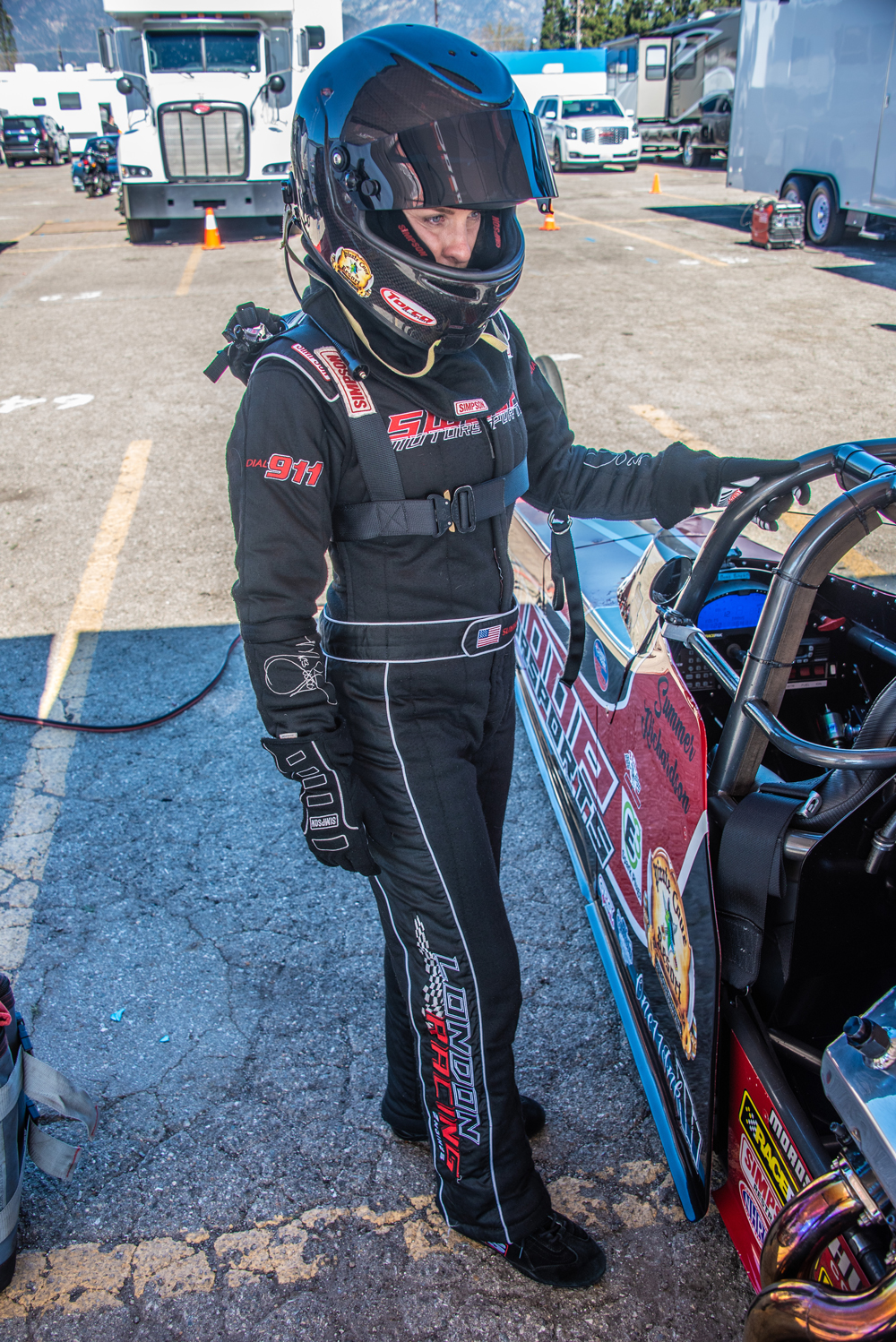
As an example of fire-safety evolution, Minson pointed to the heavy bunker gear worn by firefighters, noting that those materials were eventually modified into lighter suits favored by volcano explorers. “In the next 10 years, you’ll see Nomex products and futuristic styles that are going to be coming out, lighter than the typical Nomex,” he said.
Meeting Expectations
Some suit makers have a different measure of practical product-planning experience. Cheyenne Reed of Accelo Racewear in Punxsutawney, Pennsylvania, is a longtime local racer who now campaigns a dirt late model. He started his driving suit experience by trying to fabricate a custom suit to fit his father. “I had a really hard time ordering from different companies, with poor customer service, and the whole process was cumbersome and difficult,” Reed said. “The fit wasn’t very good, not what we were expecting from a custom suit. I finally hit the ground with Accelo in 2019 and had a lot of success. As a racer myself, I know what people expect.”
Reed makes the obvious point that anyone who straps into a competitive vehicle of any kind needs a protective suit, such as Accelo’s Champion line of SFI-approved racewear. Accelo Racewear is currently working to develop drivers’ suits that will meet the SFI 3.4A5 standard, which is now a NASCAR requirement. “The logos for SFI 3.2A5 don’t have to go through testing, but for 3.4A5, they do,” Reed said. “They have to exceed SFI’s benchmark to pass. We send in samples to SFI that are the same way we construct the suit for thermal protection. They do flame burn [the fabric samples], shrink them, and do other tests. A lot of the parts are the same, but with 4A5, you have to send in samples of the logos for testing as well.”
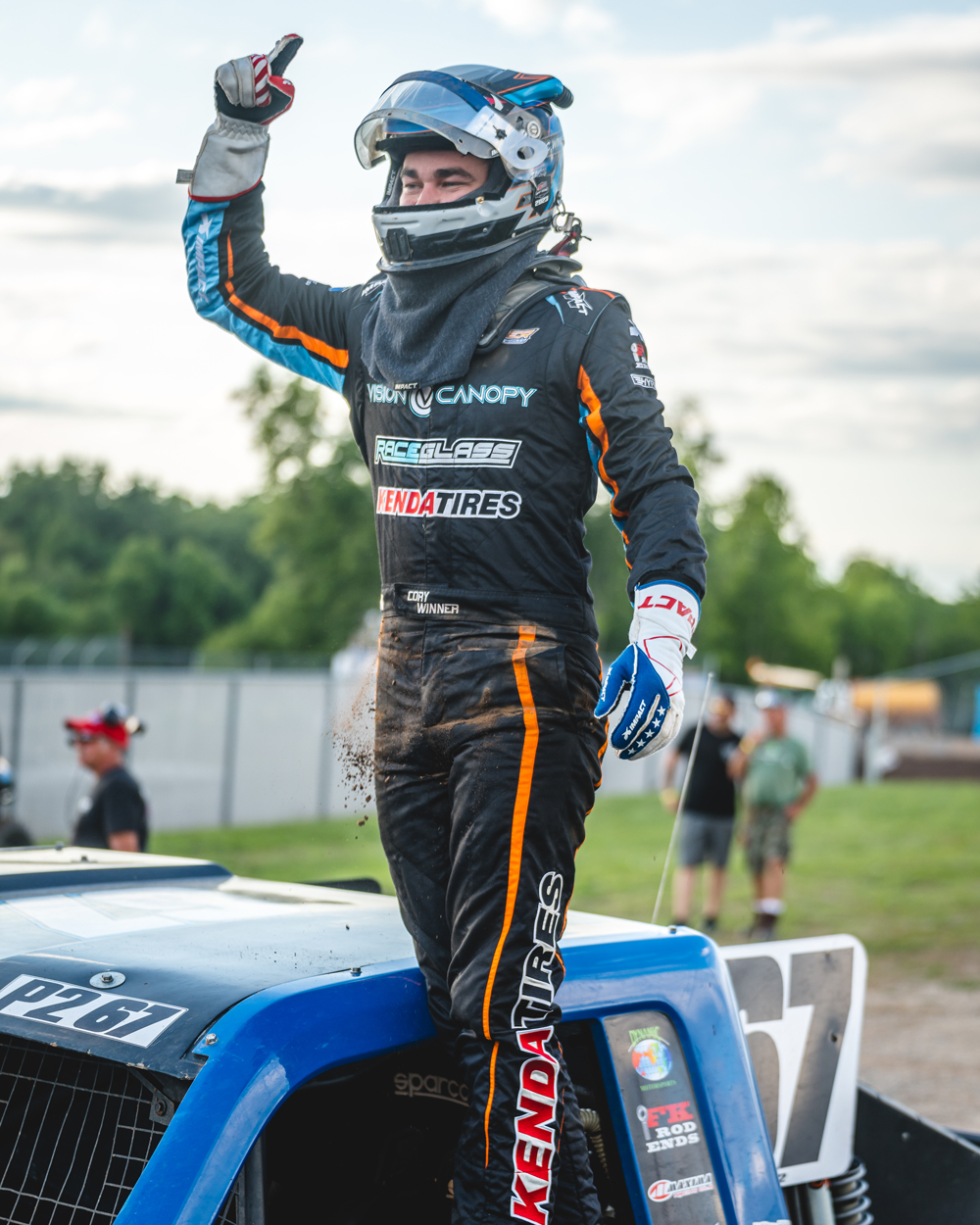
Accelo, like other providers, is working to find and develop alternative fabrics to make the suit more driver-friendly while still delivering superior protection. “We definitely have some things in the works,” Reed explained. “We’re working with suppliers to develop lining materials, usually a soft-knit Nomex. They might be able to produce seamless liners for us, depending on how we can construct the suit, which would be more comfortable for drivers, and we might be able to produce more breathable material to keep the driver cooler. One of the issues with a fire is that a lot of the time, injury comes from a steam burn because they’re wet with sweat, not just the flame burn. It depends how much moisture is in the suit that hasn’t evaporated. The farther we can get the moisture away from the driver’s skin, the better off we are.”
Budget-Conscious
G-FORCE Racing Gear of Acworth, Georgia, is another provider that offers a comprehensive line of equipment for all aspects of driver protection. Danilo Oliveira estimates that suits make up about 5% of overall business, which also encompasses tools such as driver restraints and helmets. G-FORCE aims most of its products at budget-conscious racers, who don’t require the sort of advanced fire protection that the FIA mandates for Formula 1, for instance. As an example, Oliveira points to enhanced glove and shoe protection mandated by the FIA after Romain Grosjean suffered burns to his hands and feet when he was trapped in his burning F1 car for close to 30 seconds following a horrific 2020 crash during the Bahrain Grand Prix. “Personally, I think the suits we offer provide excellent protection,” Oliveira said. “If the SFI standard stays as it is, we will be working with better materials increasing how long the suits can handle the fire, but not necessarily to increase driver protection. There hasn’t been anything major [in terms of fire-protection advances] in the last nine, 10, 11 years.”
One driver mistake he has repeatedly spotted is amateur competitors relying on less-expensive karting suits while driving race cars. Karting suits are designed to protect their wearers from abrasions when they become separated from a kart, not against injuries from fire. “If you look at how suits have gone in the past five to 10 years, that is the best protection you can have,” Oliveira explained. “No one gets heat-injured anymore if they are wearing the proper material. We are working on lighter material that is still going to give the same amount of protection.”
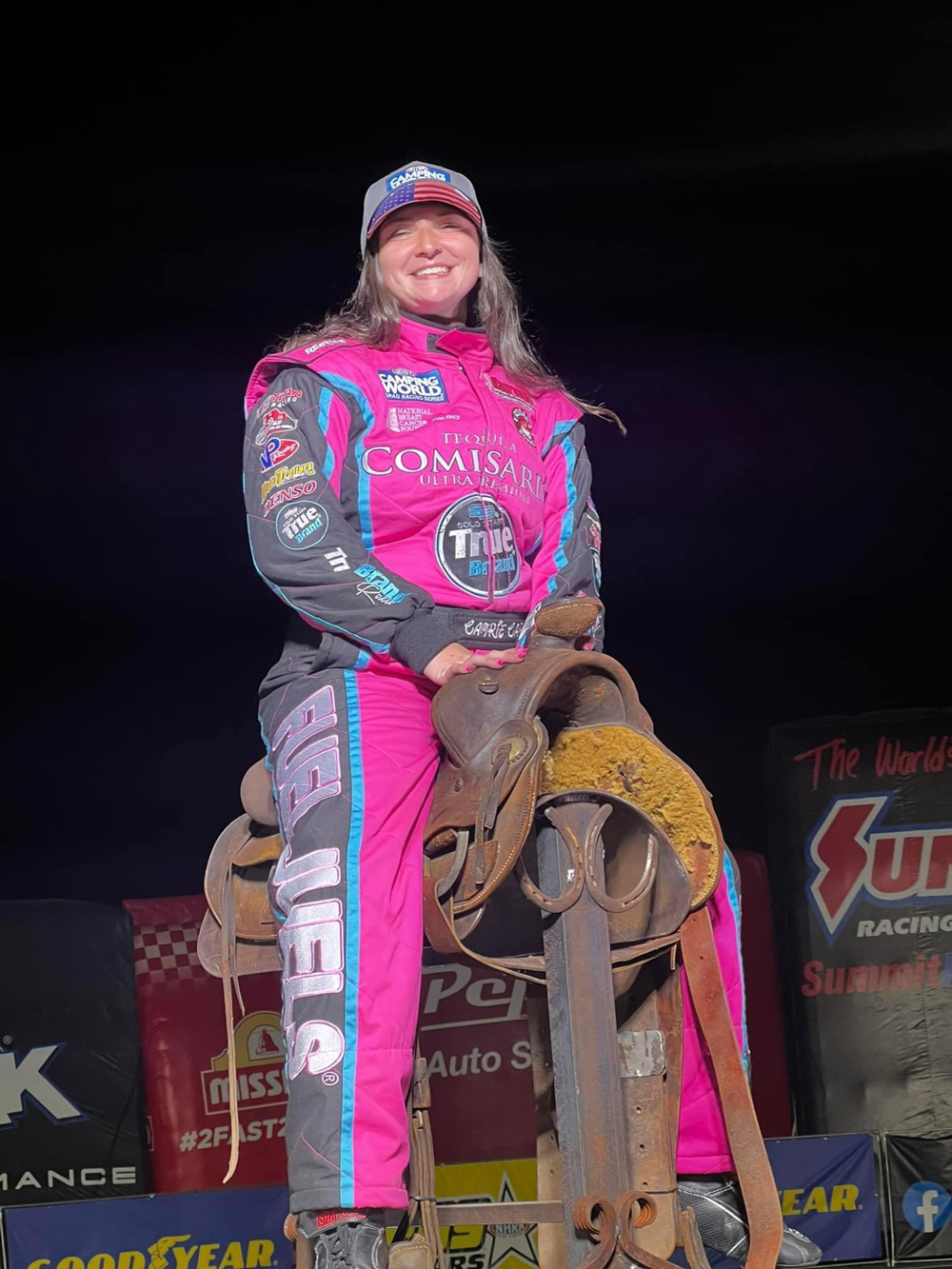
Doing that at G-FORCE, Oliveira said, involves blending better comfort and flexibility into a suit that racers on a budget can reasonably afford. “As a company, we don’t work with high-end customers,” he explained. “We look at a suit that costs $2,000 and ask, how do we get the latest technology in a suit that’s going to cost one third of that price? My customer base is entry level to midrange. If the suit is $1,000, my customers aren’t going to buy it.”
G-FORCE has worked over the past few years on making suits at an affordable price point “while offering it with ‘X’ weight,” Oliveira said. “If you look at our entry-level competitors, their suits haven’t changed in the past 20 years. We are making the entry-level products better, so we can offer the best suit at a $500 price point.”
SOURCES
Accelo Racewear
acceloracewear.com
G-FORCE Racing Gear
gforce.com
Impact Racing
ximpactusa.com
K1 Race Gear
k1racegear.com
RedTide Race Gear
redtidecanopies.com
 MEMBERSHIP LOGIN
MEMBERSHIP LOGIN JOIN PRI
JOIN PRI
